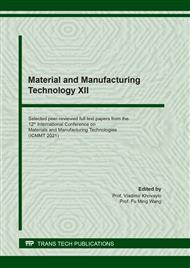p.71
p.79
p.85
p.95
p.103
p.109
p.117
p.125
p.137
Upcycling of Polystyrene Waste Plastics to High Value Carbon by Thermal Decomposition
Abstract:
Globally, the adverse environmental impact of waste plastics is of increasing concern. Most plastics are naturally non-degradable, thus imposes serious environmental threats, especially, to marine life. Upcycling such waste into valuable contents is an effective approach to managing waste plastics. In this study, graphene is synthesized from waste polystyrene (PS) by thermal decomposition at different temperatures (500, 600, 700, 800, 900 and 1000 °C) for two hours reaction time in a stainless steel autoclave. The synthesized materials are characterized by X-ray diffraction (XRD), scanning electron microscopy (SEM), transmission electron microscopy (TEM), Energy-disperse X-ray analysis (EDS) and surface area by using Brunauer–Emmett–Teller (BET). The yield of the product materials was investigated and optimized against the temperature. The synthesized graphene is considered a promising material for many applications, especially in environmental applications.
Info:
Periodical:
Pages:
103-108
Citation:
Online since:
August 2021
Authors:
Keywords:
Price:
Сopyright:
© 2021 Trans Tech Publications Ltd. All Rights Reserved
Share:
Citation:


